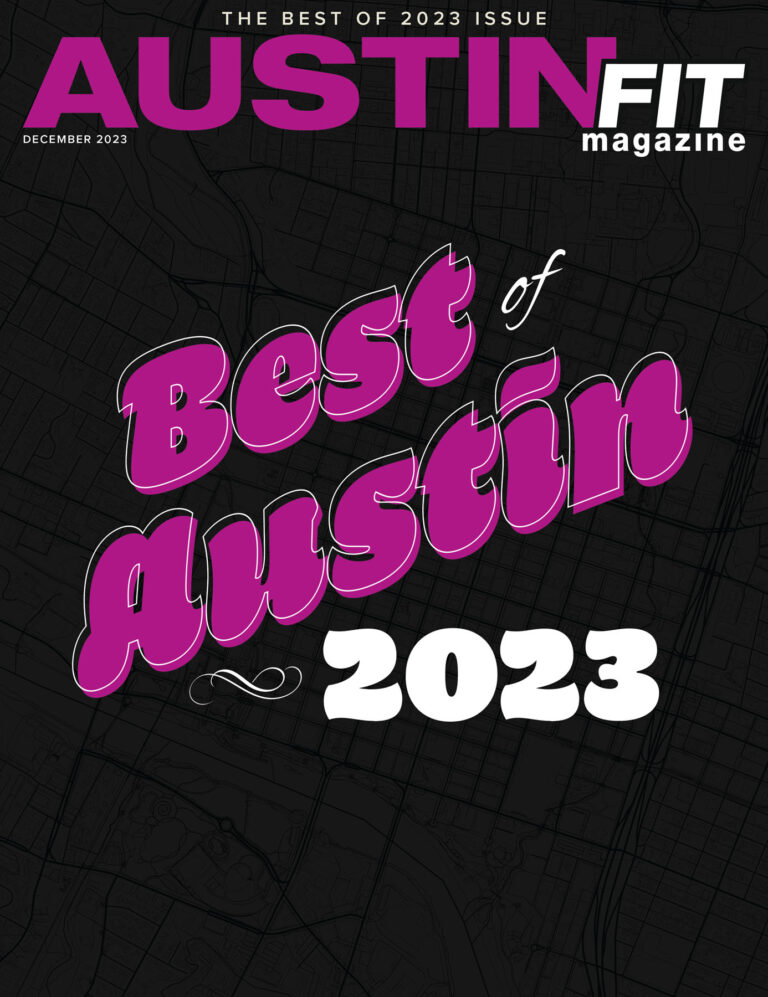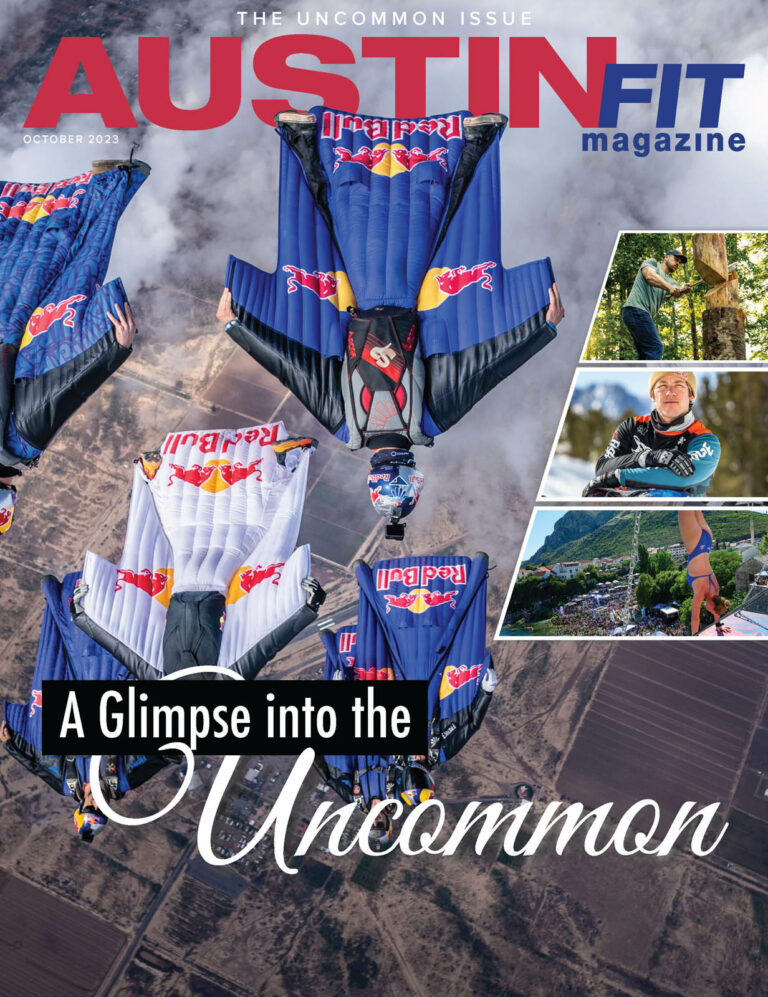A Participant’s Review of the AFM FITTEST

Ask ten people around Austin to describe their view of fitness and you’re going to get ten different answers. This is one of the great things about our ever-growing town because there are so many diverse ways to become “fit.” Boot camps, CrossFit, martial arts, swimming, cycling, running, rowing—my apologies if I left your group out, but you get my point.
When Austin Fit Magazine announced the competition earlier this year, I was in without a second’s hesitation. Sure, the events were tailored more towards people doing boot camps than anything else, but I always love a challenge. As a long distance runner, I don’t have much need for the ability to do a high volume of pull-ups, burpees, or to demonstrate a super-strong handgrip. Maybe these define a certain aspect of fitness, but for my training purposes they become counterintuitive. The athlete I was seven years ago would have been a much better competitor for these ten events.
My background of fitness is quite diverse. In high school, I played football and golf, ran cross-country and track, and even tried my hand at power lifting. I excelled at sprinting, which requires short, explosive power and speed all geared towards the 200 and 400-meter events on the track. I wasn’t ever great, but I was decent enough to run in the Texas State track meet my senior year and spend a couple of seasons on the University of Missouri squad. At that point in my life, fitness was all about how much weight I could lift in the gym and how fast I could run around the track. We used to complain to our coach if the warm up was more than half a mile.
Fast forward four years and three torn hamstrings. My desire to stay fit took a different path and led to training for 5Ks and, eventually, a marathon. Time at the gym was reduced to maybe once a week and I placed a premium on core strength as well as the ability to log extensive mileage. Now I work for one of the largest running groups in Texas, coaching a variety of individuals from beginning to advanced marathoners. Since college, I’ve dropped over 20 pounds of muscle and logged a 26.2-mile personal best of 2:47.
A hectic work schedule and month of marathon recovery prevented me from putting much training time in for the AFM FITTEST. I was confident of my ability to possibly steal a few events and to be pretty mediocre at others. Being the overall winner never crossed my mind.
As much as I expected the day to be full of serious competitors, it took on a completely different tone when I walked up to the start and was surrounded by 20- to 29-year-old men wearing spandex shorts and sporting muscles built for weightlifting magazines. To top it off, there was one guy who had an electro-shock machine used for muscle rehab to fire up his hamstrings! Flashes of Ivan Drago from Rocky IV ran through my head and I wondered if maybe I had missed some kind of pre-event memo.
The first few events went about as expected. I was weak on the medicine ball throw, mediocre on the broad jump, and near the top in the 40-yard dash. It had been ten years since I’d run a 40 and I was fearful of tearing my hamstring again. My time (4.66 seconds) was about one tenth off my best in high school, so I don’t think it was quite accurate.
We moved on to a shuttle run (the agility cone test), which was designed to test both speed and agility. The grass had been torn up by the time our group arrived, meaning sharp, 90-degree turns were that much more challenging. If you didn’t have cleats for this event, you were at a severe disadvantage. The four men in my heat recorded four of the top 15 times (mine included, which was good enough for thirteenth place). At this point, I was near the top in my age group but that was soon to change—leave it to the “precision throw” to foil my day.
I place the event in quotations because I witnessed grown men tossing softballs underhanded to a target ten feet away. Maybe the rules permitted this, but they should be amended. Where is the skill involved? How does this test fitness? I let these questions get to me, losing focus on my throws and making just one of five attempts, and my overall score took a huge hit.
We moved on to burpees and pull-ups, where the rules were so loosely defined that people were doing different variations depending on the judge. One competitor “achieved” 30-plus pull-ups although he didn’t reach full extension once. Another competitor recorded 40-plus “downward dogs” although the scorer counted them as burpees. It’s hard to figure out what exactly was being tested if the movement did not require going all the way down and coming back up to full extension.
My scores on both—14 pull-ups (goal was to get 10!) and 32 burpees—were middle of the pack in overall scoring. These events, however, had taken a toll on my marathon-trained body; my arms were shaking and my shoulders felt like 200 pounds of dead weight.
The hand grip station gave a brief reprieve from the stifling mid-day heat. All we had to do was squeeze as hard as we could and the mini-machine would measure how many pounds we pulled. While it was the easiest of the ten and required the least amount of effort, the energy from the Castle Hill Fitness employees was greatly appreciated. And for those who need to squeeze an object with as much force as possible, make sure you breathe out instead of holding your breath during the effort. I’m surprised nobody burst a blood vessel from squeezing so hard while simultaneously not breathing.
The final two events were what I had looked forward to from the outset. The interval run, testing short bursts of speed as well as stamina, was up first. This is what I consider a true test of fitness, not just because it’s tailored toward my running background but because you need leg strength, endurance, agility, and the mental fortitude to conserve energy in the first few sets. The first interval started at 16 yards and each increased incrementally by two yards, up to 34. We had ten seconds to run to the first cone and back, followed by a ten second rest. Once the ten seconds was up, the judge blew the whistle and you ran to the next stage. After six sets, there were just a few of us left. Sets seven and eight weeded out a couple more and by the finish of number nine, I was the only one who remained. My wife, who was kind and generous enough to come along for the day, said she was so nervous she couldn’t even watch!
The crowd gathered around was energizing and I had full confidence my legs would get me down and back in time. A big part of achieving fitness goals is mind over matter. I told myself I was going to do it and coming short wasn’t an option.
When the judge blew the whistle, all I could focus on was the little orange cone at the edge of the fence. I got there in plenty of time, made a clean turn, and had the finish line in site. It was right about then, however, that my legs crumbled under me like a wounded deer exhausted from the chase. The heat had finally taken its toll and my body had revolted. I gathered myself, giving everything I could to get across the line, but the referee held up his hands to signal that I was a mere half yard short.
Once we got to the mile, I was concerned about being able to break six minutes. For most, that might not sound like a bad thing but I typically run 5Ks at an average 5:20 mile pace. During marathon training, I can knock out six to eight repeats in the 5:30 range. At this point in the day, though, I just wanted to have a respectable finish and not walk. After crossing the line in 5:32, I felt like asking for a do-over; sure, it got me the sixth best time overall but my never-content personality desired a mulligan.
When we received the overall results, I was surprised to see that I finished thirty-first out of 120 total. My pitiful precision throw did me in, as just two more tosses would have bumped me up 13 places while three more would have placed me in the top 15.
My rub with the competition lies within the overall structure. As difficult as it might be to truly define fitness, an incredibly large segment of the Austin population couldn’t help but feel left out. The running and triathlon communities have arguably the greatest presence in this town yet the token offering was a one-mile run only after eight events geared to those who work out with kettleballs and an event for people who frequent the ball toss at carnivals.
Based on the tests given, the fittest man out there was David Braswell, a former collegiate athlete and Marine Special Forces member. Unfortunately for this highly trained athlete, softball-tossing skills were put at a premium. Without that test Braswell would have won the competition by an insurmountable margin as he exemplified better than anyone else on this day in June a skill set of speed, agility, explosive power, stamina, and strength. While he may not be on the cover of this magazine, he’s your FITTEST.
I mean to take nothing away from the job done by the sponsors and team at Austin Fit Magazine. They pulled off an incredibly successful first-year event. I’ve had my hand in directing a number of road races around town and I know the difficulty that goes in to producing fitness events. My hope is a reconsideration of defining AFM’s FITTEST to incorporate the myriad of diverse fitness opportunities that readers participate in throughout the year. A 10K or marathon runner would fail miserably at a CrossFit competition while, similarly, boot camp participants won’t excel to the same level at road races. Our town boasts a bevy of Olympic runners, swimmers, triathletes, and one cyclist who happens to hold seven yellow jerseys. Let’s pick their brains and find out what fitness skills they’d recommend. In any case, I’ll see you in 2013 at Camp Mabry!






